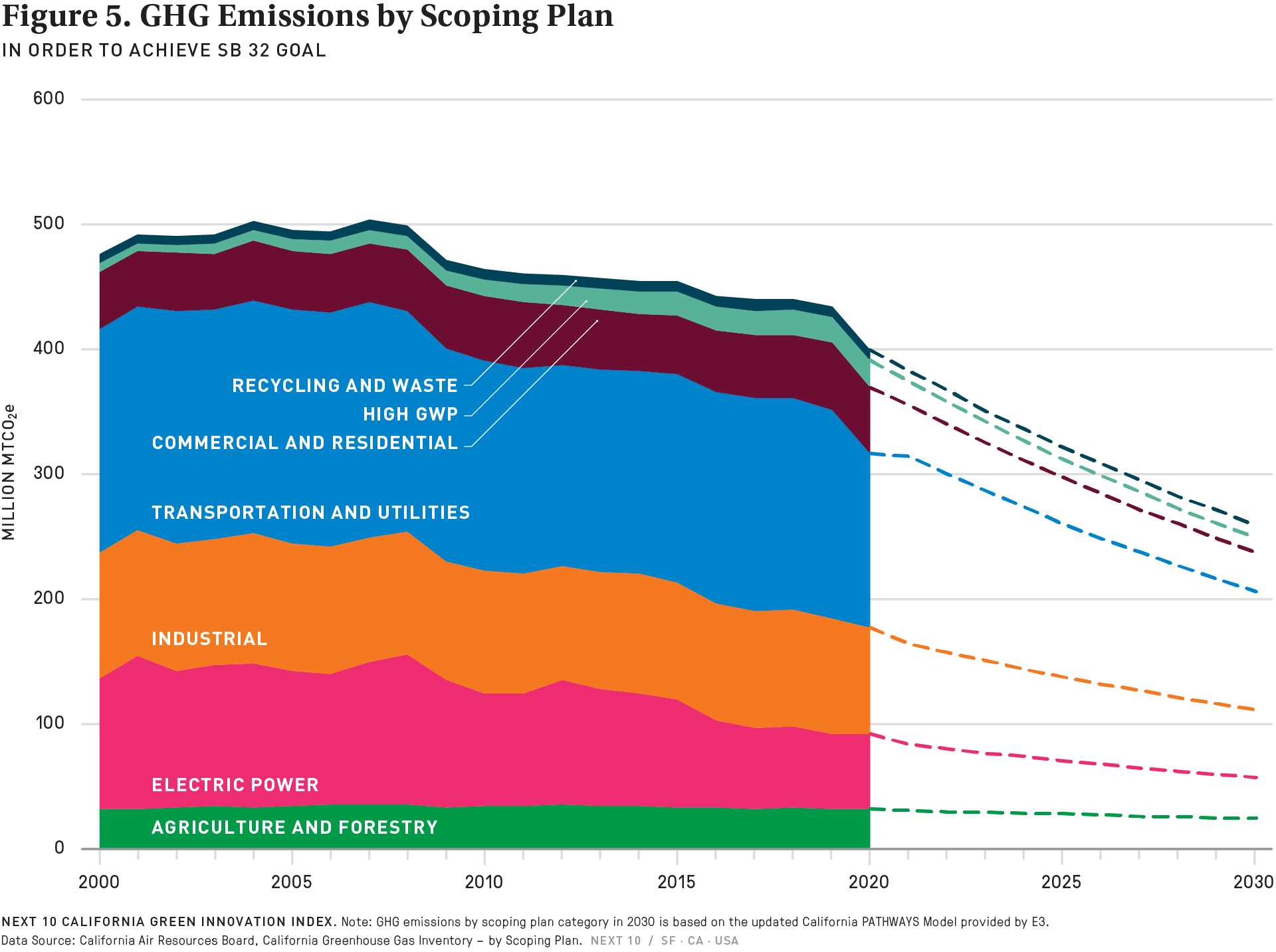Challenge
- Based on the trajectory of the past ten years (from 2010 to 2020), and similar to 2019, the Mining (-14.7% YoY), Petroleum Refining and Hydrogen Production (-10.4% YoY), Electricity Generation from Imports (-14.1% YoY) sectors are most likely to meet the 2030 GHG emission reduction goal. In addition, GHG emissions from petroleum refining and hydrogen production—two of the largest emitters—have gradually declined since 2018. In 2020, even though the electricity imports from commercial and industrial usage went down, in-state electricity generation increased by 6.27 percent. Given the third consecutive year of drought conditions reducing electricity generated from hydropower, the state will likely need significant efforts to keep up the pace of GHG emission reductions in the electric power sector.
- Even though total GHG emissions in California significantly decreased in 2020, thanks to a reduction in on-road emissions, two other sectors have increased their emissions. These sectors need to begin decreasing in order to catch up to meet the SB 32 goal. Emissions from high global warming potential industries—which mainly consist of the use of substitutes for ODS for refrigeration and air conditioning—have been trending in the wrong direction for at least two years (+2.7% from 2019 to 2020).18 Notably, high heat events in 2020 increased emissions from the transmission and distribution subsector of in-state electricity generation.19 GHG emissions from all of the other scoping plan sectors, which are defined by the California Air Resources Board, have mostly remained flat.20
18 Other scoping plan categories in the high global warming potential scoping plan sector include conditioning activities, semiconductor manufacturing and sulfur hexafluoride (SF6) released from electricity transmission and distribution. Use of substitutes for ODS is by far the largest GHG-emitting high GWP category.
19 In August 2020, hundreds of thousands of Californians briefly lost power in rolling blackouts amid a heat wave, marking the first time outages were ordered in the state due to insufficient energy supplies for the first time in nearly 20 years. According to CAISO’s analysis, which extended across much of the West, this created high demand for power that exceeded planning targets. Further, resource planning targets have not kept pace with the evolving power mix, wherein demand during peak hours outpaces the supply of solar-produced power. Finally, the market had under-scheduled demand projections, and day-ahead market rules prevented it from realizing the error.
Final Root Cause Analysis: Mid-August 2020 Extreme Heat Wave. Jan. 13, 2021. http://www.caiso.com/Documents/Final-Root-Cause-Analysis-Mid-August-2020-Extreme-Heat-Wave.pdf
20 The 2022 CARB Scoping Plan can be found here: https://ww2.arb.ca.gov/our-work/programs/ab-32-climate-change-scoping-plan/2022-scoping-plan-documents

